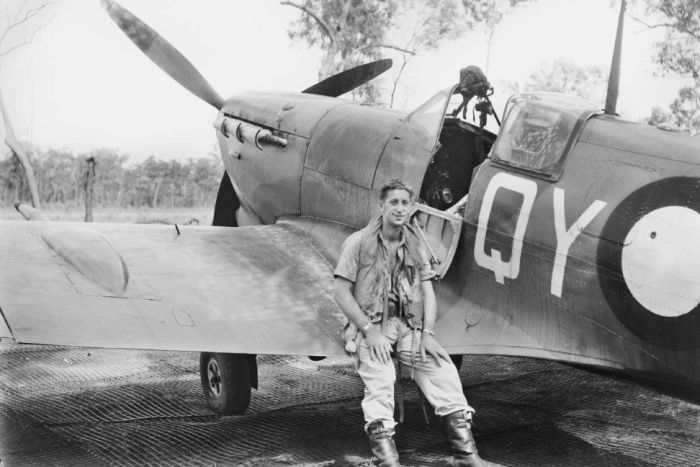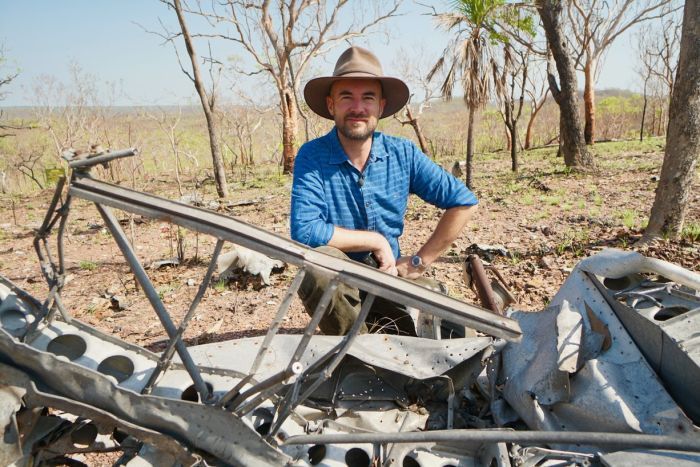February 19th, 1942 was a turning point in WW2 for Australia with a massive attack on the Northern city of Darwin.
At 9:58 a Japanese air raid began which was later likened to Pearl Harbour such was its intensity. More than 240 aircraft, in two separate raids, attacked the urban areas, the port and the airfields on the edge of the city.
More air raids followed, totalling more than a hundred over the next two years as the Japanese sought to deter Allied invasions of Java and Timor.
Darwin World War II hero’s RAAF spitfire wreckage discovered in Litchfield National Park – https://t.co/qZx4CkIhkr pic.twitter.com/l9eaauJxUf
— MeganLickliterMundon (@specsonwrecks) November 17, 2019
To begin with Darwin proved an easy target with the Japanese suffering few losses. However, as WW2 progressed the Royal Australian Air Force fought back.
In 1943, on June 30th, Flight Sergeant Colin Duncan was part of an intercept mission scrambled to see off yet another Japanese attack squadron.
Duncan engaged an enemy fighter in a dogfight in the skies over Darwin but his Spitfire A58-2 took a hit and the cockpit burst into flames.
Moments later the Flight Sergeant found himself in a spiral dive, plummeting through the air toward the bush South of the city.

The rip cord that was designed to release the cockpit’s canopy failed forcing Duncan to manually push it open in order to make his escape.
At the last minute he was able to leap clear of the plane and engage his parachute. He watched as the Spitfire continued in its death spiral to the ground below.
He made it safely back to earth but had suffered severe burns and had almost nothing in the way of supplies.
Undeterred by such dreadful circumstance Duncan was determined to survive and was eventually found by a rescue party of Marines some five days later.
Once he was recovered the Flight Sergeant returned to the skies above Darwin in another Spitfire and saw the war out without further injury.
The original Spitfire’s crash location was never confirmed during Duncan’s lifetime. After the war he went on to play cricket for Victoria State and managed a successful construction business, had a wife and two daughters.
Today however, seventy-six years after that fateful day his grandson, Duncan Williams, has been able to visit the site of the crash in Litchfield National Park, some 110 kilometres South of Darwin.
The wreckage has been left untouched for over three-quarters of a century due to its remote location in Top End Outback.
Williams expressed shock when confronted with the mass of twisted metal that is the remains of the Spitfire his grandfather once flew.
He acknowledged that Colin Duncan had been very lucky twice over, not just in managing to escape the burning plane as it fell, but also the fact that the crash site is so remote that it can only be accessed with any ease by helicopter.
“I didn’t expect it. I don’t know what I was expecting really,” Mr Williams said, “Here we’ve got the cannons. You can see the angle the plane hit the ground. No-one hammered that in with a sledgehammer. That’s the force of the plane hitting.”
The RAAF has gifted the wreckage of the WW2 Spitfire to the Northern Territory Government in order to keep up the legacy of the brave men and women who fought so hard during World War Two to keep Darwin out of enemy hands.
RAAF Air Commodore John Meier said of the Spitfire that, “this one is of major significance because it was lost in the battle of Darwin,”
At the Cenotaph in Darwin, on the 19th of February, a ceremony of remembrance is held every year to honour the men and women that died on that day and during the subsequent air and sea battles.
Another Article From Us: Remains of B-17 Gunner Identified
At 9:58 a siren sounds, marking the time at which the first attack took place.
